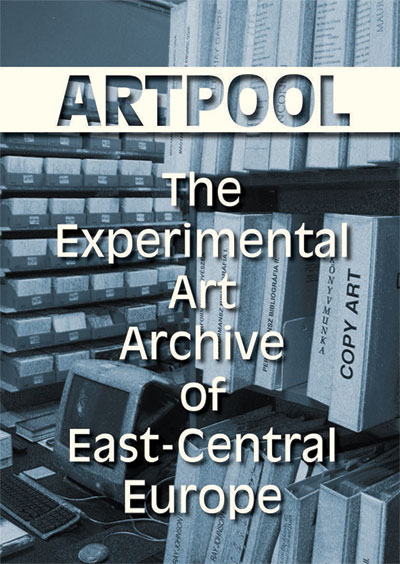John Cage: How To Get Started (2010)
Filed under booklet | Tags: · creativity, improvisation, performance

“John Cage’s first and only performance of How to Get Started on 31 Aug 1989 was conceived of almost as an afterthought–a performance substituting for another that had been previously planned. In his performance, delivered at a sound design conference in Nicasio, California, Cage talks about the difficulty of initiating the creative process, and about improvisation, a subject about which he had long been deeply ambivalent. He proposes a collaborative framework in which sound engineers capture and subsequently layer his extemporized monologue, which consisted of ten brief commentaries on topics then of interest. This amounted to an experiment having to do with thinking in public before a live audience.”
The publication also features commentaries by Laura Kuhn, Aaron Levy and Arthur J. Sabatini.
Publisher Slought Books, Philadelphia, and John Cage Trust, 2010
Open access
ISBN 0981540961, 9780981540962
19 pages
György Galántai, Julia Klaniczay (eds.): Artpool: The Experimental Art Archive of East-Central Europe (2013)
Filed under book | Tags: · archive, art, art history, artists book, avant-garde, east-central europe, fluxus, mail art, performance, sound poetry, visual poetry

“How could an arts initiative, called Artpool, in the 1970s, in a small corner of the world, in East-Central Europe, become a significant node, a reference point in a worldwide – initially analogue (postal) then digital (online) – network?
How has it been able to validly speak out and address issues and people again and again in the ‘storms’ of history and scientific-technological progress, for more than four decades now?
Using authentic documents, numerous photographs and illustrations Artpool’s chronological volume containing a brief presentation of events and exhibitions, a detailed bibliography and references follows the history of the Artpool art project – launched more than forty years ago by fine artist György Galántai and later jointly realized with Júlia Klaniczay – from the exhibitions of the Chapel Studio active in Balatonboglár between 1970 and 1973, through the establishment of the Artpool archive in 1979 to the opening of the Artpool Art Research Center in Budapest in 1992 and its becoming an esteemed research facility by the 2010s.
Hundreds of artists from all corners of the world sent their works to the international Artpool exhibitions, which are built on the “Active Archive” concept and explore themes inspired by our perpetually changing world, in the same way as György Galántai and Artpool also participated in the events organized in the various other nodes of the “Eternal Network”.
The information accumulated in Artpool over the forty years, the collections that were built up, and the research work based on them form the tissue of today’s institute, which beyond the developments in the art scene also informs us about the eventful forty or so years during which Artpool came into being and has continued to operate. This period can be best described by the following keywords: communism, iron curtain, secret files, tapping telephone wires, bans, “the happiest barrack”, samizdat publications, counterculture, change of the system, democratic transition, freedom of the press and speech, independent non-profit initiatives, European Union, strengthening nationalism and conservatism; 20th century, millennium, 21st century; technological and communication explosion.”
Foreword by Kristine Stiles
Publisher Artpool, Budapest, 2013
ISBN 9630872250, 9789630872256
535 pages
PDF (50 MB, updated on 2019-10-29)
Flash
The New [New] Corpse (2015)
Filed under book | Tags: · art, body, performance, poetry

“The New [New] Corpse explores current representations of the body in which the human figure appears fragmented, distorted, or emphatically absent in a carefully curated selection of poetry, translation, essays, and exhibition documentation. With a mission statement provided by an artist’s corporation, to a poem about corpses, and an essay about how Billy the Kid changed American mythology, these works emphasize the strange and residual power of material bodies, distorted and skewed through representation. It is produced in conjunction with a group exhibition of the same name.”
With written contributions from Antibody Corporation, Rebecca Beachy, Érik Bullot, Judith Goldman, Julia Drescher, Every house has a door (Matthew Goulish & Lin Hixson), Christy LeMaster, Valeria Luiselli, Jesse Malmed, CJ Martin, Nathanaël, Caroline Picard, Martine Syms, John Tipton, Zoe Todd, & Fo Wilson. Featuring artists Benjamin L. Aman & Marion Auburtin, Amelia Charter, Joseph Grigley, Jane Jerardi, Young Joon Kwak, Jason Lazarus, Jesse Malmed, Carlos Martiel, Heather Mekkelson, Jefferson Pinder, Aay Preston-Myint, Rachel Niffenegger, Xaviera Simmons, Shane Ward, & Shoshanna Weinberger.
Edited by Caroline Picard
Publisher The Green Lantern Press, July 2015
ISBN 9780988418578
144 pages
via Caroline Picard
PDF (22 MB)
Comment (0)
